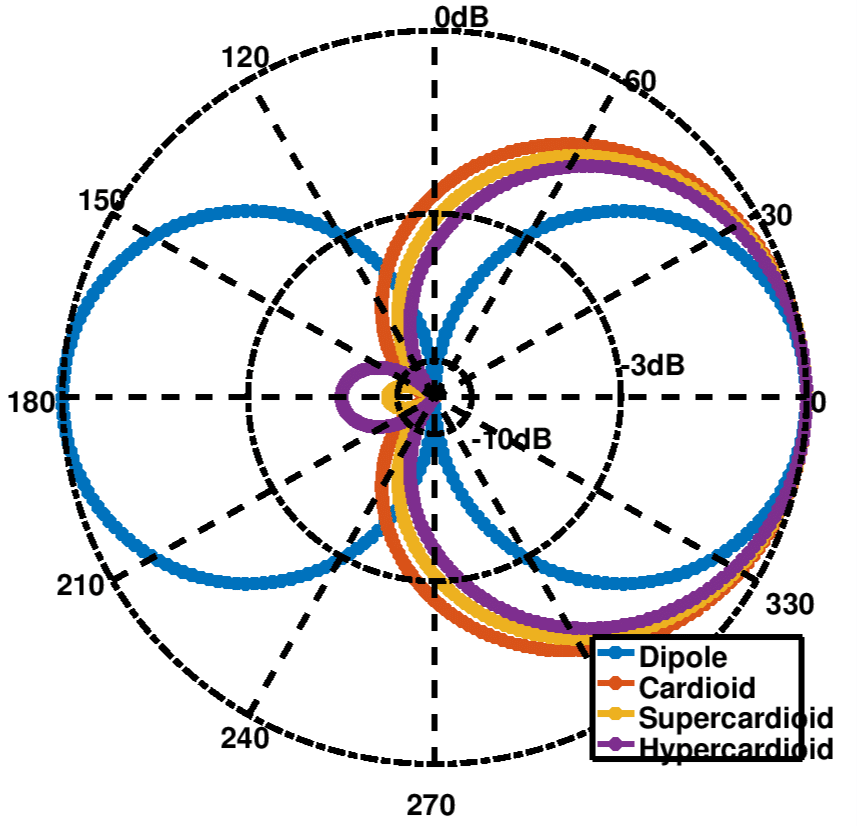Most linear array beamforming consider the sound source impinging on the array at the broadside. Endfire beamforming however considers a source that is impinging the array along the axis of the linear array. Consider an N microphone array as shown in Figure 1:
Figure 1: N microphone array
The aim is to find weights such that the signals from the N microphones cam be combined to form a beam in the desired direction and nulls in the undesired directions. For two microphones, the constraints are used to form:
where is the desired beam direction and
is a desired null direction. Given
, the choice of
will determine whether the spatial beam will be a dipole, cardioid, hypercardioid or supercardioid. Sometimes, two cardioids are formed and their difference used to perform spatial beams.
Figure 2 below illustrates these 4 spatial beams that can be obtained using two microphones.
Figure 2: Endfire beam patterns
Increasing the number of microphones helps in reducing the beamwidth.
VOCAL Technologies offers custom designed solutions for beamforming with a robust voice activity detector, acoustic echo cancellation and noise suppression. Our custom implementations of such systems are meant to deliver optimum performance for your specific beamforming task. Contact us today to discuss your solution!

